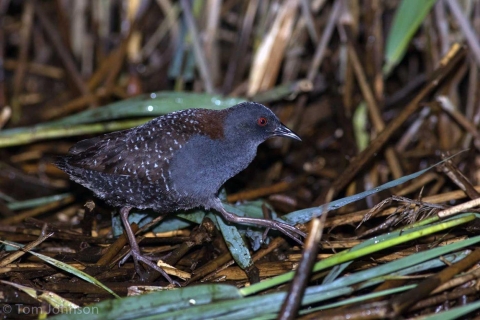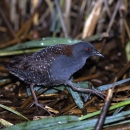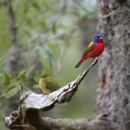Seasons of Wildlife
Fall/Winter – Arriving in late autumn and early winter, vast numbers of waterfowl find wintering habitat at E.F.H. ACE Basin NWR. The refuge is a haven for wood ducks, pintails, shovelers, mallards and widgeon, to name a few of the approximately 20 species that winter here. Keep an eye out for the American kestrel, bald and golden eagles that grace the sky, and harrier hawks that fly low over the marsh wetlands looking for a meal.
Spring/Summer - . During the spring and summer, neotropical migratory songbirds call the refuge their home. These small, colorful birds venture thousands of miles from their wintering areas in Central and South America. Prothonotary warblers, painted buntings, and ruby-throated hummingbirds are just a few that use the refuge to nest, raise their young and replenish their energy reserves before migration in the fall. Insects are plentiful during this time of year, so be sure to bring insect repellent.
Throughout the seasons, a myriad of other wildlife call the refuge home. Wood storks, egrets, herons and ibis forage the impoundments for food. American alligators are frequently seen sunning on the dikes or swimming in the impoundments. The forested upland areas are home to white-tailed deer, raccoons, bobcats, river otters, gray fox, rabbits, and squirrels, all of which can be seen at any time of the year.
Featured Species
E.F.H. ACE Basin NWR was established to conserve and enhance a nationally significant ecosystem that provides a complex of habitats for fish and shellfish, wintering waterfowl, endangered and threatened species, migratory and resident birds and other upland animals. Lying along the Atlantic Flyway, the refuge is rich in birdlife year-round. Designated as an Important Bird Area by the National Audubon Society, as many as 291 bird species have been recorded on the refuge.
The Refuge provides critical marsh habitat for the secretive Black rail, the smallest North American rail, listed as a high priority species in the Atlantic Coast Joint Venture's-South Atlantic Migratory Bird Initiative and, listed in South Carolina as a species of special concern. Although the rail is widespread, its population is sparse. The Black rail is found in the upper zone of tidal marshes and the loss and degradation of wetland habitat is a significant threat to this small marsh bird. The protected wetlands on the refuge and the management programs underway to enhance these areas are crucial for the Black rail.
The threatened Wood stork forages and nests in managed wetlands and, endangered shortnose sturgeon breed and feed in the Edisto and Combahee rivers. The migratory Painted bunting, a species of continental conservation interest, finds quality nesting and foraging habitats in the forested edges, scrub thickets and upland fields. Bald eagles and American alligators can be seen throughout the year on the refuge.







